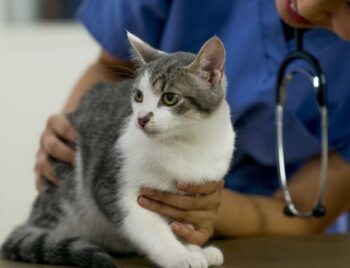If you have a cat, you’ll want to keep your furry friend in good health. Do you know the most common cat health issues that your kitty might face? In this post, you will learn the basic ones that are important for you to recognize and understand.
Understanding Feline Health: An Overview
To ensure that your kitty remains in the best of health, you need to understand certain issues. These include knowing the critical role of nutrition at various stages of kitty’s life, taking care of preventive measures such as vaccinations and regular check-ups, and establishing effective communication with your vet.

Good nutrition is key and remains fundamental to good health. A critical aspect includes providing balanced, high-quality food. Different life stages require specific nutritional needs.
You will find it important to know the significance of proteins, fats, vitamins, and minerals. You need to learn how to balance the amount of wet versus dry food to meet your cat’s dietary requirements.
Tailoring The Diet To Different Life Stages
Different stages of your cat’s life will have different nutritional requirements. For example, a kitten must have specific nutrients to foster growth. On the other hand, a senior cat diet must adjust for an aging body.
Dietary problems can arise from incorrect portion control, overfeeding, insufficient hydration, or providing human food instead of foods geared to kitty’s needs.
Preventive Measures
Regular vet checkups need to take place. These can contribute a great deal to keeping your kitty healthy. Preventive measures that a vet can initiate include vaccinations, deworming, flea and tick prevention, dental care, and a regular general check-up.
Signs That Your Kitty Might Be Sick
In the beginning, before cats agreed to domestication, they emerged as excellent hunters, but also became prey to some larger animals. Thus, the cat developed the ability to hide injury or illness quite well.
Today’s domestic cat still instinctively uses this ability to mask a physical problem or illness. The following are some symptoms of a sick cat that you might watch for, and what type of problem they could represent.
1) Eating more, eating less, or not eating
A change in your cat’s normal appetite and eating habits could indicate a problem.
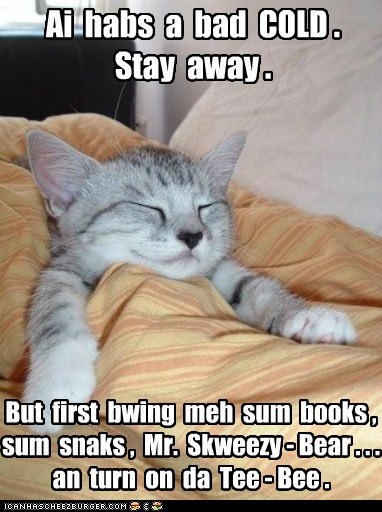
Increased appetite: Cause could come from inestinal parasites, hyperthyroidism, or diabetes. Sometimes the cat might have a gastrointestinal disease that causes poor nutrient absorption.
Decreased appetite: This one has several possible causes, such as nausea, fever, dislike of the food, a gastrointestinal disease, or mouth pain. The latter could come from dental disease, a mass or foreign body, or trauma.
2) Drinking more: Excessive drinking has a list of potential causes. The most common include diabetes, kidney disease, hyperthyroidism, or increased calcium.
3) Increased meowing or vocalizing: An increase in kitty communication attempts could indicate physical or emotional distress. A cat often meows more when hungry or in pain. Problems that come with aging can also cause more frequent meowing.
4) Sudden inability to urinate: See the vet immediately, especially with a male cat. The kitty may have an obstruction in the lower urinary tract.
Also, if a cats stops using the litter box it may occur because he associates pain with the litter box. Check with your vet to pinpoint the problem.
If you live in a multi-cat household, make sure one cat doesn’t guard the litter box so others can’t use it. (A good reason to have one litter box per cat plus one extra.)
My old Pogo stopped using the litter box because it was covered. As soon as I removed the cover, he went back to using it.
5) Vomiting or diarrhea: This problem encompasses a long list, including gastrointestinal obstruction or foreign body, intestinal parasites, and food sensitivity or allergy.
Check with your vet to make sure kitty does not have kidney disease, pancreitis, exocrine panceatic insufficiency, inflammatory bowel disease, or liver disease.
Perhaps the cause stems from a bacterial or viral infection or some toxin he’s ingested.
6) Not groooming or overgrooming: Perhaps kitty deals with stress. When Pogo lived in the animal shelter, he pulled all the fur from his stomach and other parts of his body as well.
A painful bladder can cause overgrooming, while painful joints could make the cat stop grooming altogether.
7) Sudden changes in mood: Possible causes could include pain, changes in vision or hearing, hyperthyroidism, high blood pressure, brain tumors, or rabies. Call the vet if you notice such a change.
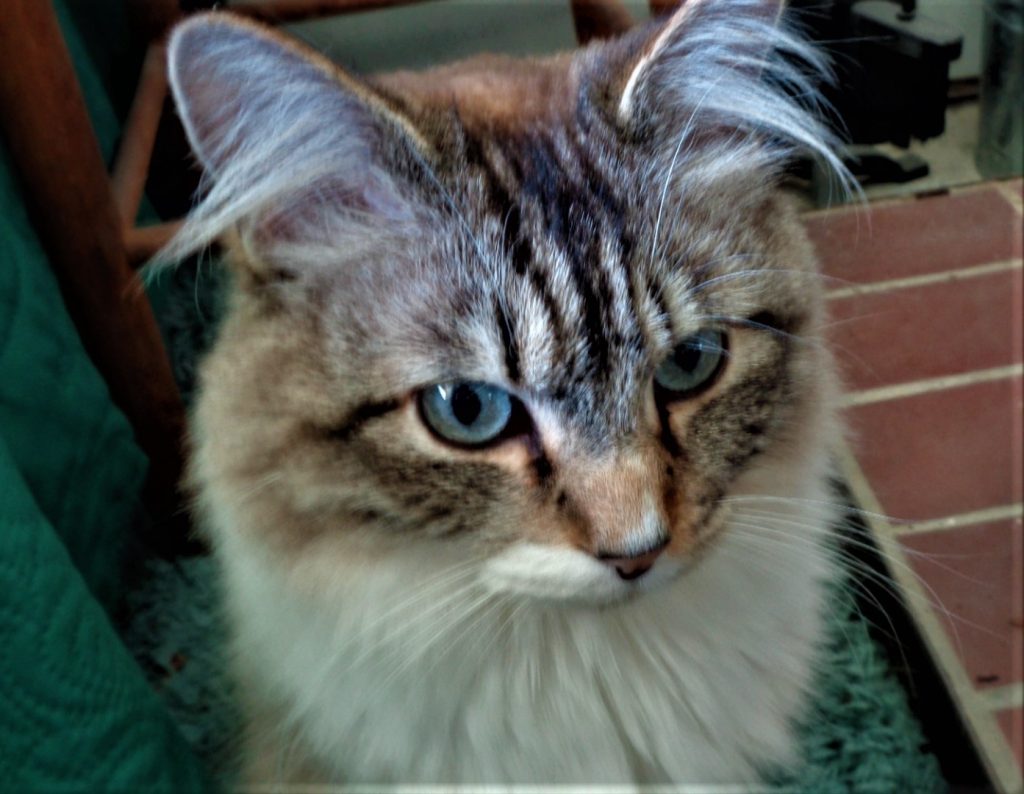
8) Changes in pupil size: Pupils should get smaller in bright light and larger in dim light. If the cat’s eyes do not operate in this way, it could indicate some injury or inflammation to the eyes, or even something as serious as cancer.
My Mocha, when he first moved in with me, had dilated pupils much of the time for the first few months. His problem apparently was due to fear and stress, because once he relaxed and felt comfortable in my home, this eye problem disappeared.
This list does not contain all possibilities; however, it gives you a good start. Now, here are a few common health issues and how to address them.
Has Your Cat Ever Experienced A FLUTD Problem?
FLUTD stands for feline lower urinary tract disease. It refers to a group of problems associated with the lower urinary tract, or bladder and urethra, of cats.
These problems can occur at any age, but the usual difficulty occurs with middle-aged overweight cats who do not get much exercise and don’t have outdoor access. Also, stress can increase the risk of FLUTD.
The symptoms of FLUTD conditions include several: straining in the litter box, urinating often in small amounts, crying while urinating, licking the genital area, urinating outside the litter box, or blood in the urine.
A Personal Experience
My Carlos showed he had this problem in a dramatic way. I’d noticed he was having trouble with urination, and wondered if he had some form of FLUTD. Then, one day, after using his box, he came to the kitchen table where I was sitting, jumped up on it, and gave a yowl of pain.

I took him to the vet immediately, who had to forcibly drain the urine. She laid him on his back and pressed along the urinary tract, extracting bloody urine.
Carlos cried out once, but must have known the vet was there to help, because he lay there on his back without moving while she worked. After a shot and a round of pills, he recovered completely. What a remarkable cat!
It is difficult to find the specific cause of a FLUTD condition, and the cat may have multiple episodes, each caused by some new problem. Your vet will do tests to determine the cause, if possible.
I believe Carlos’s episode occurred because of stress. His best friend cat, Tiger, had sustained an injury to a back leg when a dog attacked him. Tiger could no longer rough-house or hunt with Carlos. My cat found the situation quite stressful.
Are You Familiar With Chronic Kidney Disease (CKD)?
Chronic kidney disease, or CKD refers to the persistent loss of kidney function, occuring over a period of time. As the kidneys have many important functions, especially filtering the blood and making urine, with failing kidneys many health problems can result, CKD being the most common.
When kitty’s kidneys don’t work the way they should, it can cause the cat to feel ill and appear lethargic and unkempt. They may lose weight. They may also urinate greater volumes and drink more water as a result.
Tests From Your Vet Can Pinpoint Your Cat’s Condition
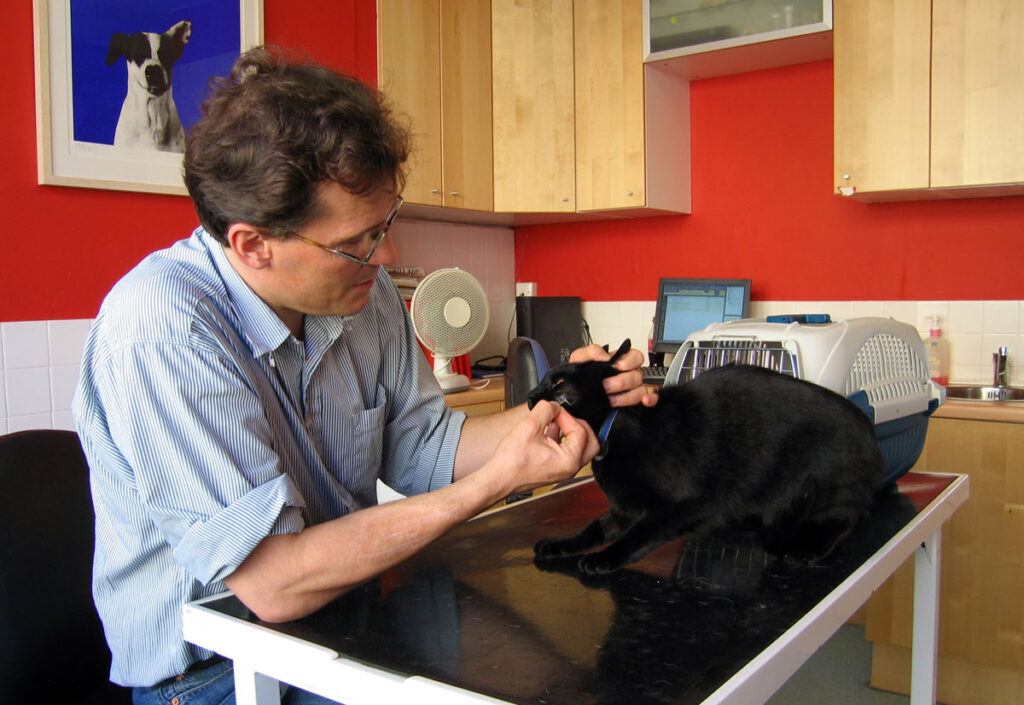
Your vet can perform tests that will analyse the cat’s condition. Though a definitive cure is not available, treatment can improve and prolong kitty’s life. An important aspect includes dietary modification.
Studies indicate that diets restricted in protein, phosphorus and sodium content can prove helpful. Such diets need a high amount of water-soluble vitamins, fiber, and concentrated antioxidants.
Some cats respond very well to treatment, and others do not. Evidence shows that the earlier CKD becomes diagnosed and treatment begun, the better the outcome for kitty.
What About Cat Dental Disease?
According to the Cornell University Feline Health Center, 50 to 90 % of cats older than 4 years of age have some form of dental disease. See your vet every year to check for tooth infections.
Most common dental diseases in cats can be prevented or treated if given proper care and monitoring. Common issues include gingivitis, periodontal disease, and tooth resorption.
Routine cleanings and oral exams also become very important. Such procedures require general anesthesia or heavy sedation, and will include dental x-rays.
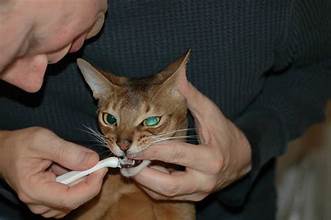
Symptoms Of Cat Dental Disease
Here are some symptoms to watch for: Excessive drooling, saliva tinged with blood, halitosis, or bad breath, yellow/brown tartar on teeth, pawing at the face, mouth, and head, or shaking the head, chattering of teeth or jaw, dropping food or having difficulty swallowing, loss of appetite, preferring only wet or moist food, weight loss, or loose teeth.
Plaque buildup needs to be removed, and toothbrushing with a special cat toothpaste is important. I must confess I do not brush my cat’s teeth — to do such an operation on Mocha might require putting him in a strait-jacket.
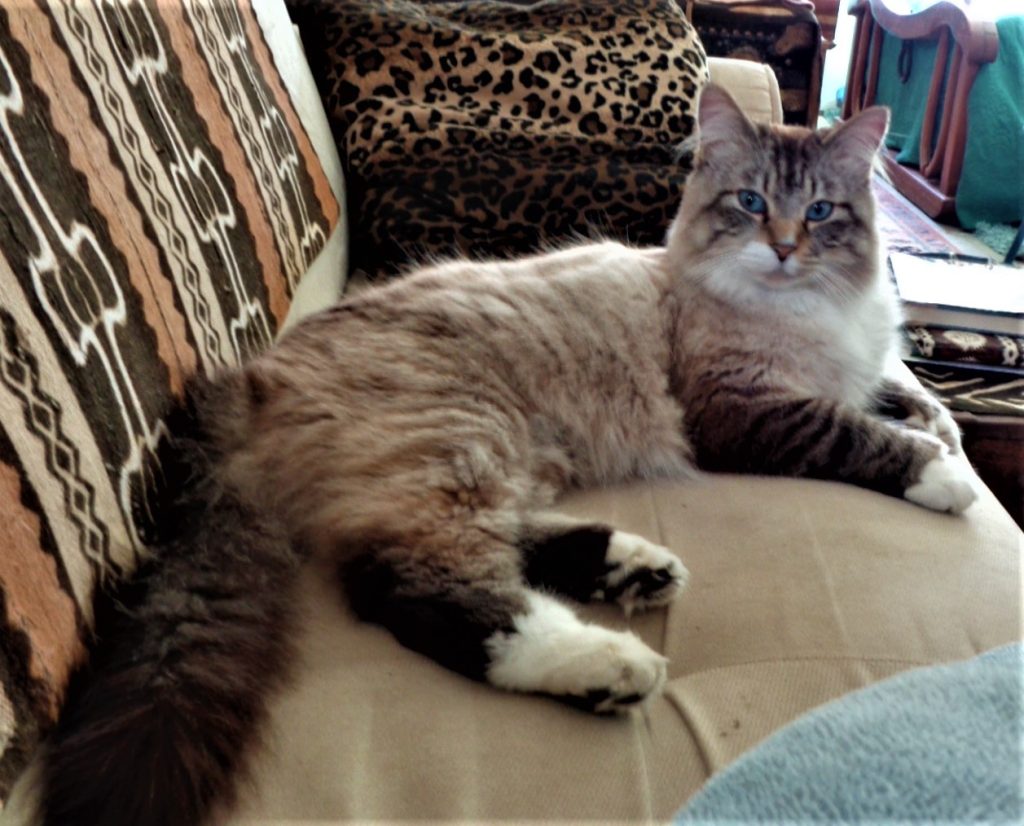
To help keep his teeth free of plaque and tartar, I use Hill’s Prescription Diet Dental Care (t/d) dry chewable pieces. He gets four of them, one at a time, after every meal. When I tell him it’s time for his “toothbrushes” he runs to the place where he gets them.
These are helpful, but a full dental exam by your vet would be a good idea. It’s something I will have done soon for Mocha.
What Is The Risk Of Diabetes In Cats?
Though currently only a small percentage of cats develop diabetes, the number of cats with this problem is growing. Diabetes mellitus is the inability to produce enough insulin to balance blood sugar, or glucose.
Untreated, the disease can cause weight and appetite loss, vomiting, dehydration, severe depression, motor function problems, coma, and even death.
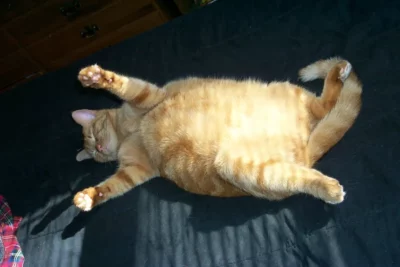
Main symptoms include increased thirst and increased urination. It is more common in obese cats. A low-carbohydrate diet probably proves most effective, and an insulin therapy treatment becomes most common.
Though the disease can sometimes be controlled, it can’t really be cured.
What Are FIV and FeLV?
These infectious diseases are greatly feared, with good reason.These potentially fatal viruses are harbored by from 2 to 4% of the cat population. Though the two are similar, they have some important differences.
The feline leukemia virus (FeLV) and the feline immunodeficiency virus (FIV), both retroviruses, will alter the genetic material of the infected cell and cause them to become little virus factories.
How Are These Viruses Transmitted?
Both of these killers can be transmitted through bite wounds. Infection doesn’t grow quickly, so it could take many years before the cat becomes clinically ill.
With FIV, the saliva from an infected cat becomes the primary mode of transmission. With FeLV, the virus comes through saliva, nasal transmission, urine, feces, and milk. It can travel from mother to kitten, through bite wounds, and occasionally through litterboxes or food dishes.
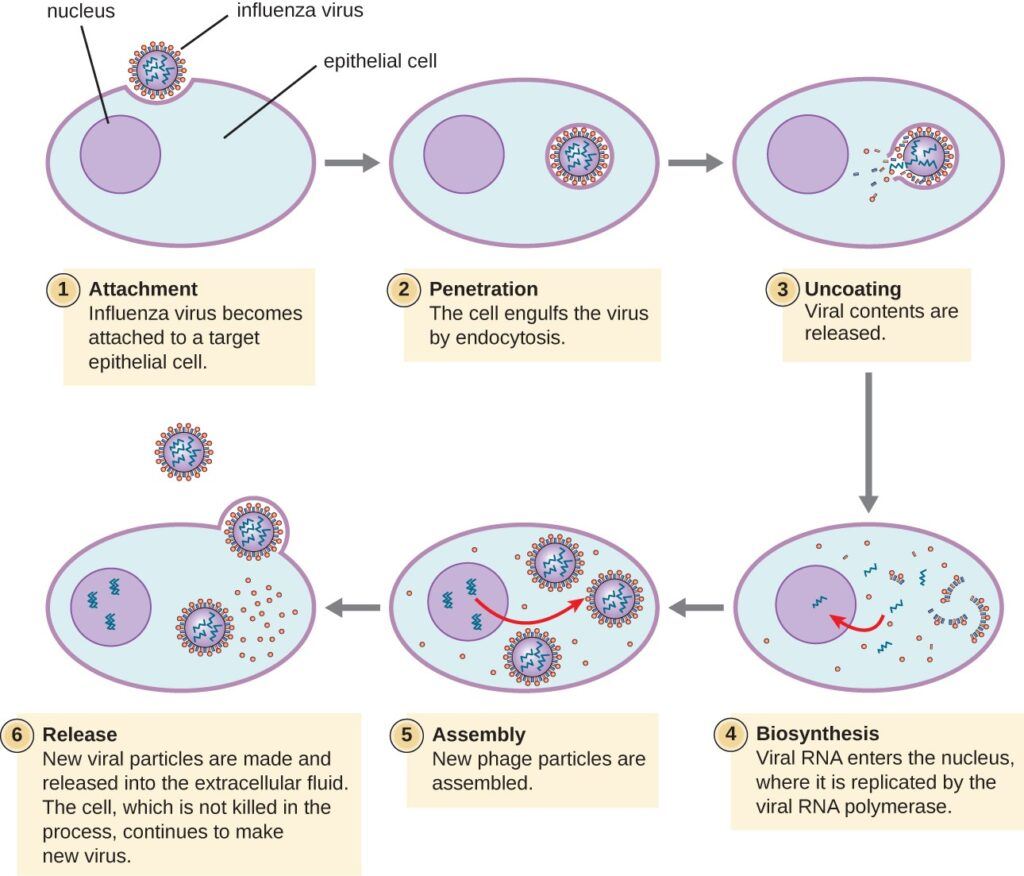
In the case of FIV, intact outdoor males prove most at risk, as they can get into fights. With FeLV, casual cat-to-cat contact can result in infection; thus, cats in the same household can pass on the virus.
It is common for the cat to become mildly ill several weeks after infection. A few lucky cats can fight off the FeLV infection, though it is not possible with the FIV virus. FIV causes a progressive destruction of the cat’s immune system.
Remember that many cats with one of these viruses can experience long periods of health after the initlal infection. Diagnosis should not mean an automatic death sentence. Such cats should receive evaluation from a vet twice a year.
Stay Aware Of The Importance of Regular Health Checks
The above list of illnesses does not include all the problems your cat might encounter. However, the list of symptoms and the description of these few diseases give you a start.
Monitor your cat closely for any sign that he/she might have developed a health problem, and confer with your vet if you have any serious concerns.
References I used for this post: medium.com/illumination/a-comprehensive-guide-to-cat-health-your-questions-answered-medium-edition-6b71b8db6d1c avma.org/resources-tools/pet-owners/petcare/feline-lower-urinary-tract-disease petmd.com/cat/general-health/how-tell-when-cat-sick vet.cornell.edu/departments-centers-and-institutes/cornell-feline-health-topics/chronic-kidney-disease petmd.com/cat/conditions/mouth/dental-issues-cats webmd.com/pets/cats/features/feline-diabetes-symptoms-treatments-prevention-diet petmd.com/cat/conditions/difference-between-felv-and-fiv

